Brickellia floribunda, Chihuahuan Brickellbush
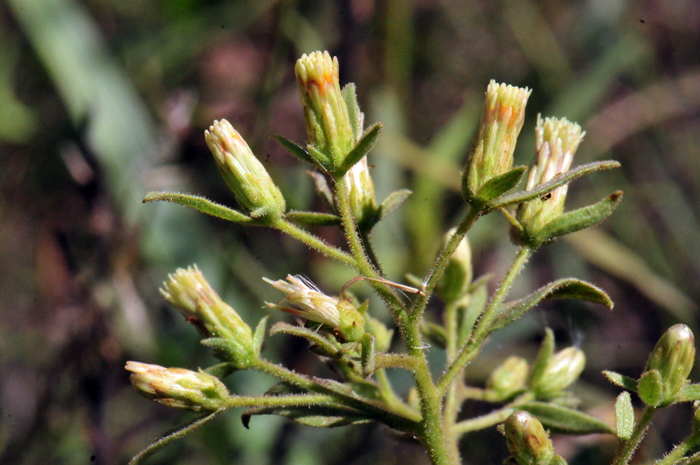
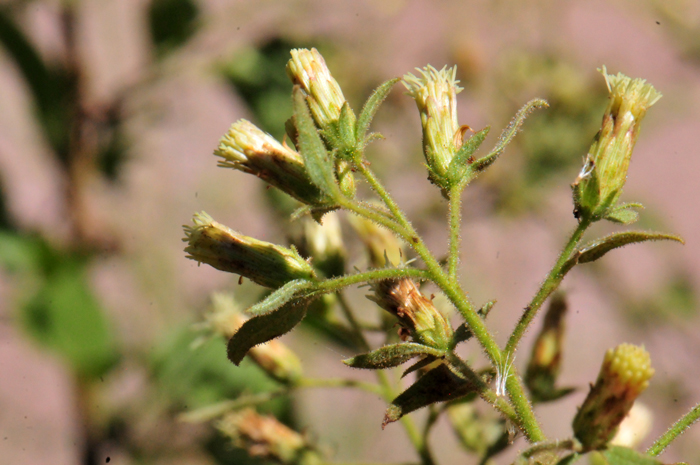
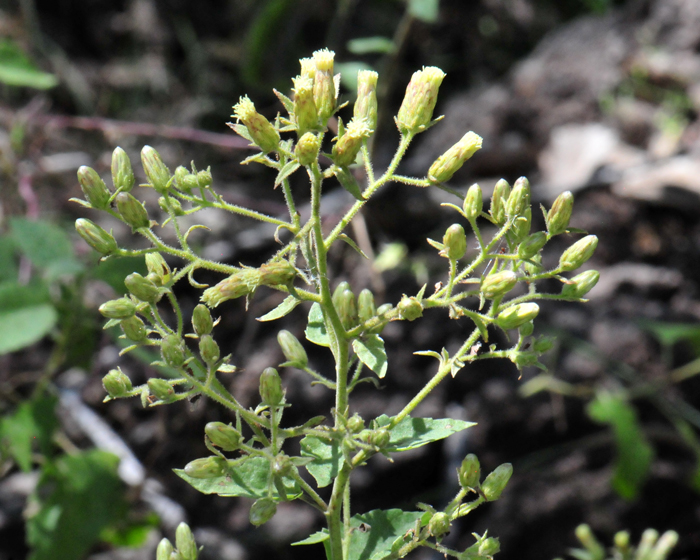
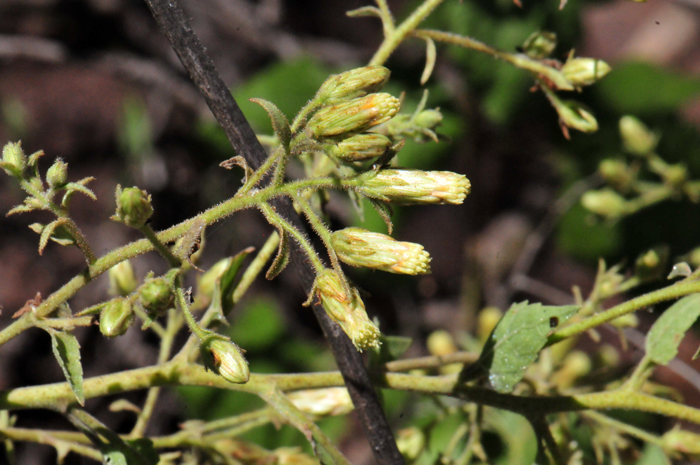
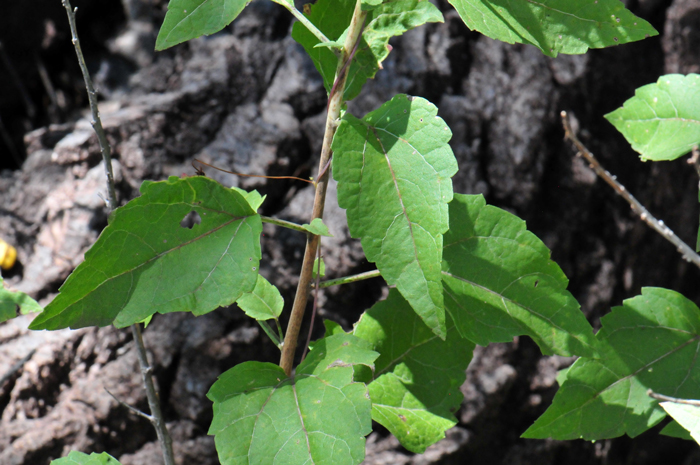
Scientific Name: Brickellia floribunda
Common Name: Chihuahuan Brickellbush
Also Called: Desert Brickellbush
Family: Asteraceae, Sunflower Family
Synonyms: ()
Status: Native
Duration: Perennial
Size: 3 to 5 feet (1-1.5 m) tall or more (6 feet - 3 m).
Growth Form: shrub or subshrub; woody at the base; multiple stems branching; upper parts glandular-viscid, sticky, often spotted with purple.
Leaves: Green; leaves arranged alternately along stem; leaves with stalk or stems ( petioles) leaf shape generally triangular, more specific dentate-ovate or rhombic-ovate; leaf surfaces gland-dotted or glandular hairy; leaf edges or margins are sharply but irregularly dentate.
Flower Color: Pale yellow or greenish-white; heads disk flowers only; arranged in multiple headed panicles, 15 to 24 florets per stem, corollas pale yellow-green or greenish-white; bracts or phyllaries surrounding head greenish, often purple tinged; fruit a cypsela with a white pappus of 30 or more barbed (barbellate) bristles.
Flowering Season: August or September to October.
Elevation: 3,000 to 5,500 feet.
Recorded Range: Chihuahuan Brickellbush is relatively rare in the United States and is found only in Arizona and New Mexico. It is also native to Baja California and northern Mexico (Sonora and Chihuahua).
Habitat Preferences: Rich soils of canyon bottoms, riparian areas, near streams; Pinyon Juniper, upper Sonoran desert species.
North America & US County Distribution Map for Brickellia floribunda.
North America species range map for Brickellia floribunda:
North American range map courtesy of Virginia Tech, Dept. of Forest Resources & Environmental Conservation
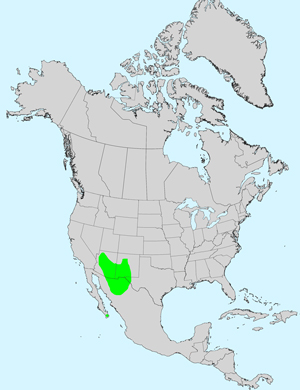
U.S. Weed Information: Unknown
Invasive/Noxious Weed Information: Unknown
Wetland Indicator: Unknown
Threatened/Endangered Information: Unknown
Recorded Range: Rare in the United States where it is found only in Arizona and New Mexico. It is also native to Mexico in Sonora and Chihuahua. In Arizona, Chihuahuan Brickellbush is found in central, northern, southern and southeast locals above 3,000 feet and in New Mexico is occurs in Southeastern corner of the state.
Genus Information: In North America there are 36 species and 36 accepted taxa overall for Brickellia. World wide, The Plant List includes 112 accepted species names and includes a further 136 of infraspecific rank for the genus.
The genus Brickellia was published by Stephen Elliott in 1824.
In the Southwestern United States: Arizona has 22 species of Brickellia, California has 13 species, Nevada has 12 species, New Mexico has 19 species, Texas has 15 species, Utah has 7 species. All data is approximate and subject to taxonomic changes.
Comments: With so many species of Brickellia, Chihuahuan Brickellbush can be identified, in part by its clusters of florets, reflective of its species epithet “floribunda” or “many flowers”; see Etymology below. According to Kearney and Peebles, Arizona Flora, 1960, the Hopi Indians would rub parts of the plant on their head to cure headaches.
In Southwest Desert Flora also see; California Brickellbush, Brickellia californica, Coulter's Brickellbush, Brickellia coulteri, and Veiny Brickellbush, Brickellia venosa.
The genus Brickellia was published by Stephen Elliott in 1824.
The species epithet floribunda (floribun'da/floribun'dus:) from floris, “flower,” or florere, “to flower,” with the Latin adjectival suffix -bundus used in the sense of doing or action accomplished, and thus meaning “profusely flowering, producing or having produced abundant flowers.”

